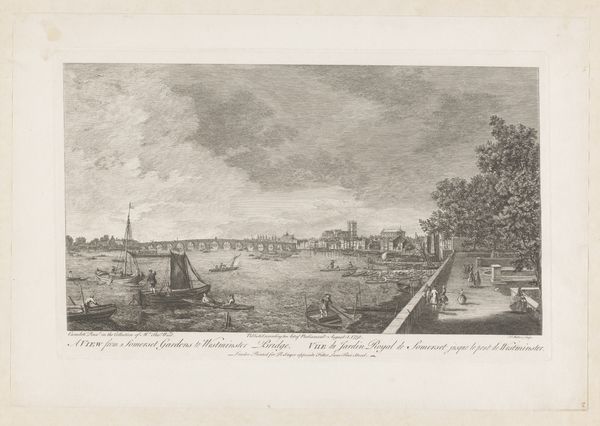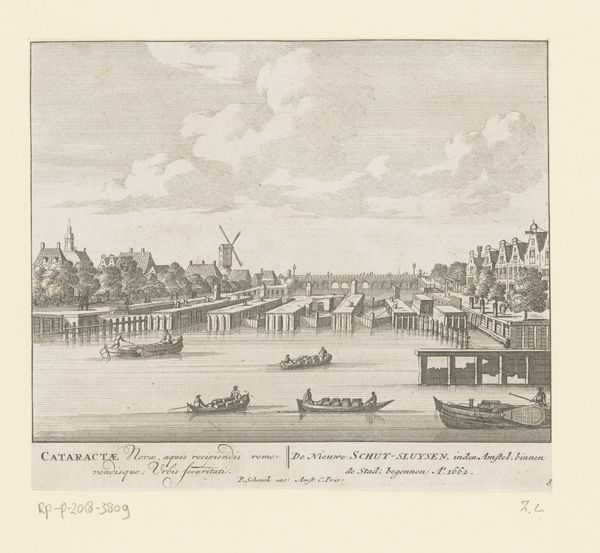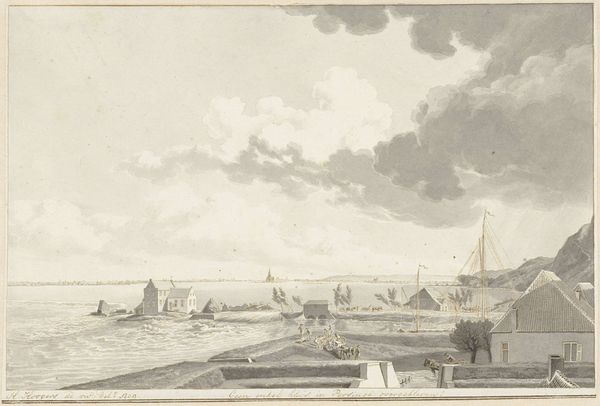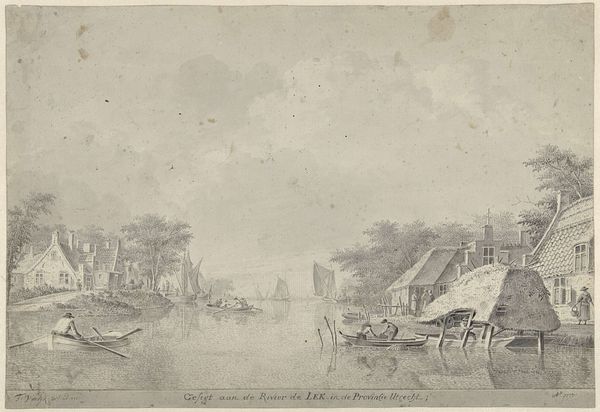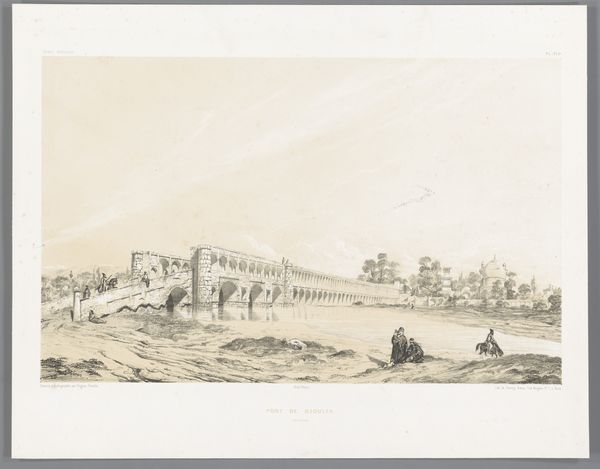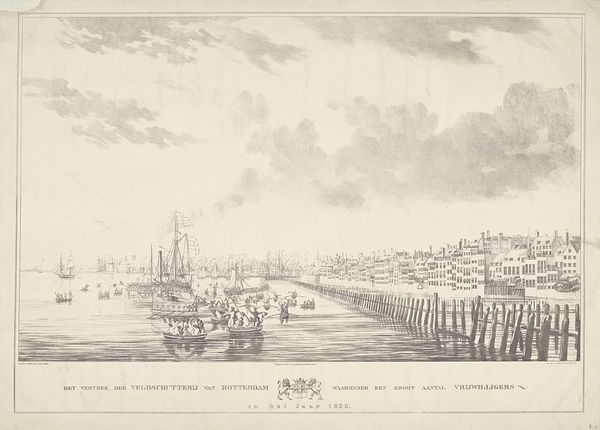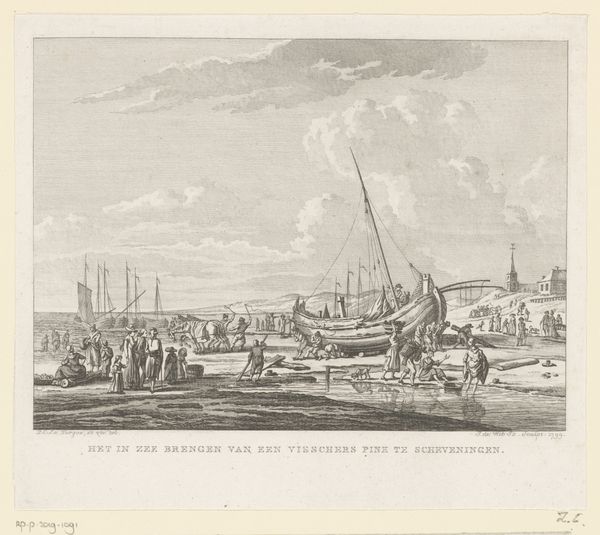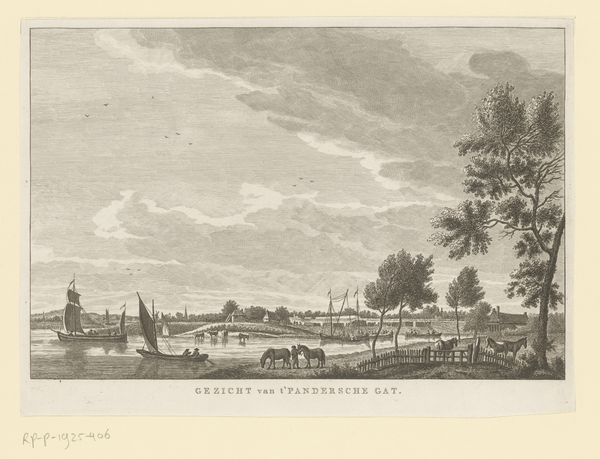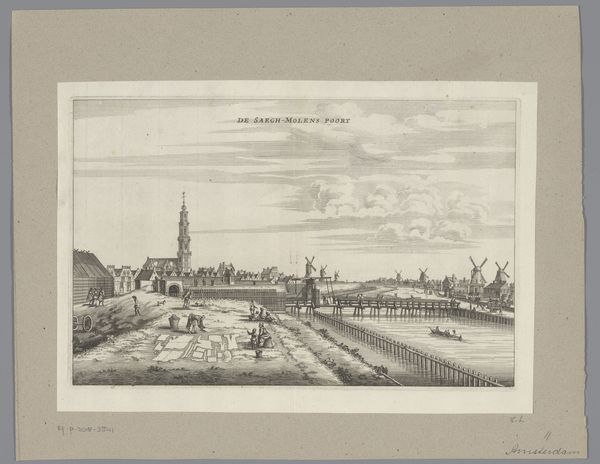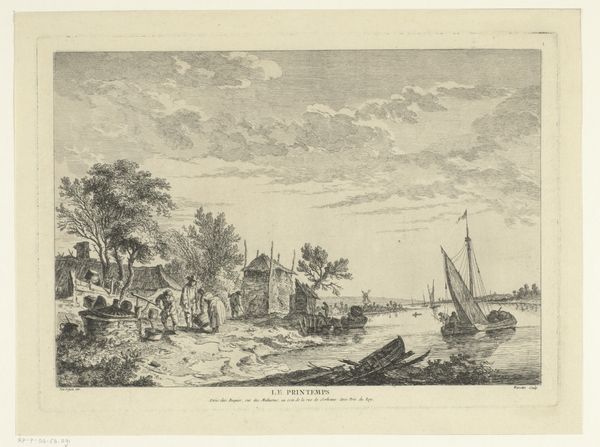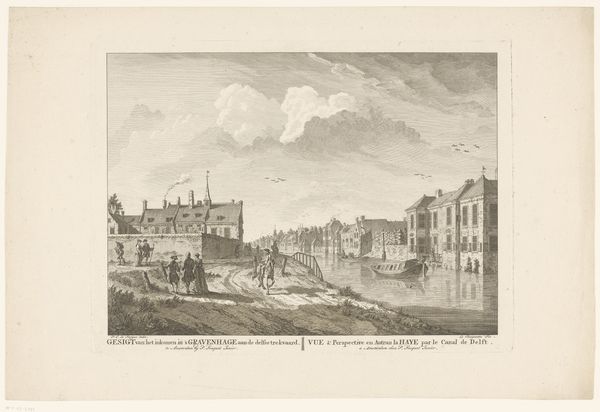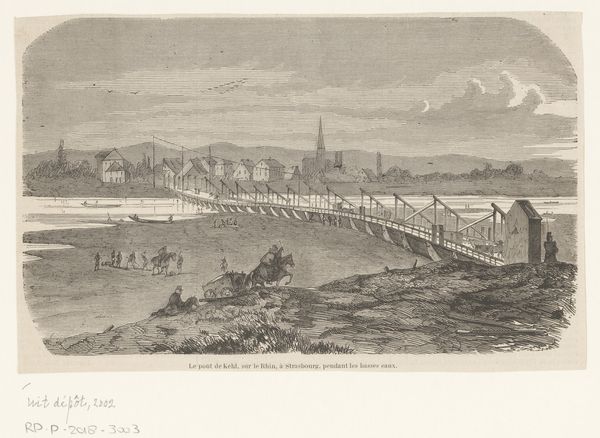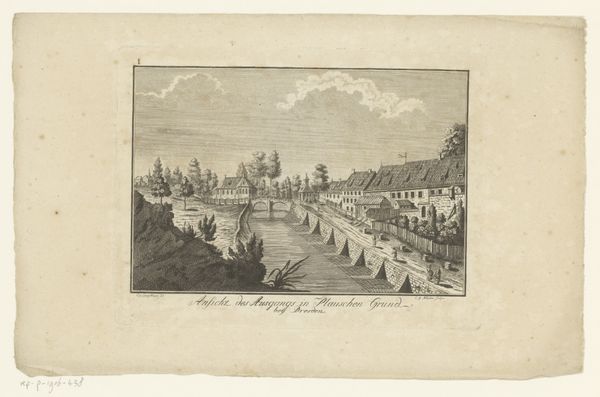
Dimensions: height 250 mm, width 393 mm
Copyright: Rijks Museum: Open Domain
Paulus Constantijn la Fargue created this view of The Hague using etching. Note the windmills in the background, symbols of Dutch ingenuity and the harnessing of nature's power. The windmill, an iconic motif, transcends mere functionality; it embodies a cultural narrative. Even in ancient Persia, similar structures appeared, grinding grain and pumping water. Here, they dot the landscape. Over time, the windmill has acquired layers of symbolic meaning. It's the ceaseless turning of the wheel, the cyclical nature of life, mirrored in the turning of seasons, the ebb and flow of tides. It also represents a collective memory, a deep-seated understanding of humanity's relationship with the land, the power of human innovation, and the enduring need to find harmony between nature and technology. As we observe these images across time, we see not a linear progression, but a cyclical return, a continuous weaving of cultural threads.
Comments
No comments
Be the first to comment and join the conversation on the ultimate creative platform.
